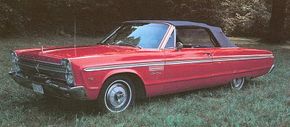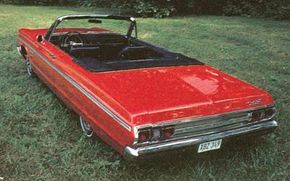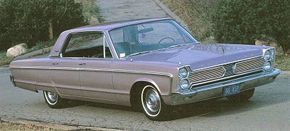Chrysler's breadwinner learned a hard lesson in the early 1960s that might be summarized by paraphrasing an old adage: "If you can't beat 'em, rejoin 'em." Plymouth quickly regrouped and came up with the 1965-1966 Plymouth Sport Fury and VIP.
Plymouth's shrunken 1962 standards were no sales match against full-size Chevys and Fords. Neither was their oddball styling, though that became more orthodox for 1963-1964.
Advertisement
But by that time, a new team of designers and managers had seen the errors of their predecessor's ways and had decided to put the mainstream Plymouths back into the mainstream -- with a vengeance.
The result was a hugely successful line of "Roaring '65s." Not only was it the broadest lineup in Plymouth history, it featured true full-size cars for the first time in four years. Fittingly, those new big ones were called Fury, a name familiar from recent top-line Plymouths.
Motor Trend described the new order this way: "If corporation executives felt nervous about Plymouth's lost market penetration -- if they blamed this loss on the car's looking a little different -- they need worry no longer. Their designers have aptly taken up most of the clichés that helped their rivals. . . .
"[T]here's a veritable kaleidoscope of four separate trim combinations (Fury 1, II, III, and Sport Fury) . . . plus last year's basic body with a neat new face to fill the intermediate-size (Belvedere) need. . . ."
In size and appearance as well as target market, the reborn big Plymouth was both Chevy Impala and Ford Galaxie. It exactly duplicated their 119-inch wheelbases (121 for Fury wagons) and came within fractions of an inch of their other dimensions.
Model choices were similar, too. Fury I and II were available in two- and four-door sedans and four-door wagons. Fury III omitted the two-door but added a hardtop sedan, hardtop coupe, and convertible; the last two repeated as bucket-seat Sport Furys.
Go to the next page to learn about 1965-1966 Plymouth Sport Fury and VIP styling.
For more information on cars, see:
- Classic Cars
- Muscle Cars
- Sports Cars
- Consumer Guide New Car Search
- Consumer Guide Used Car Search
Advertisement


